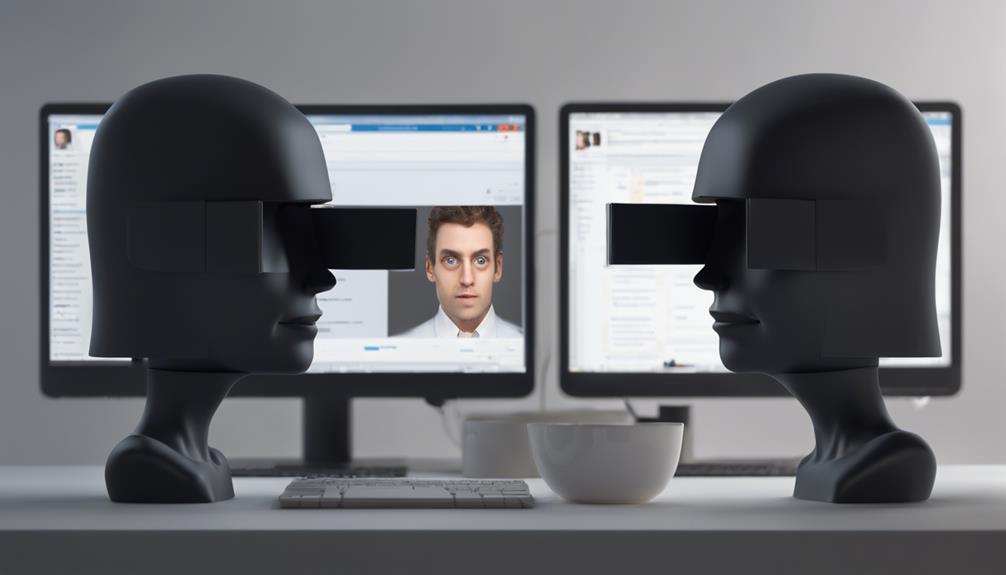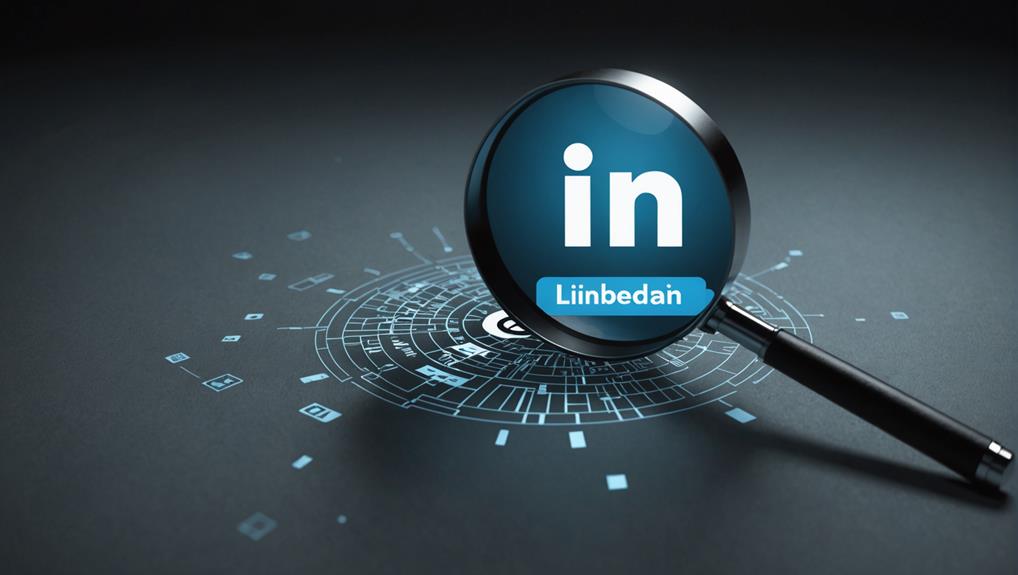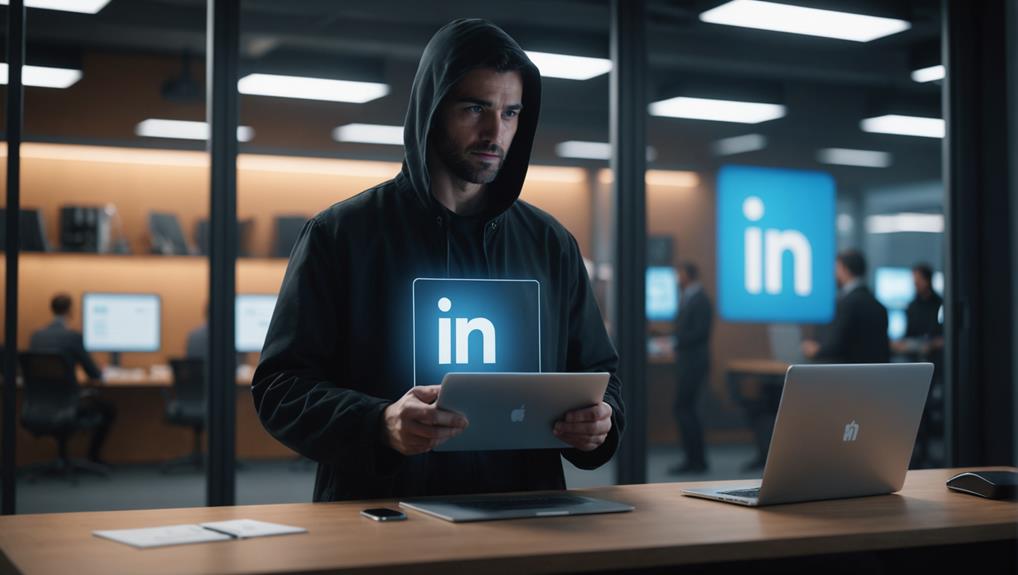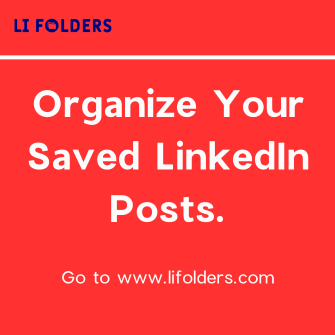
LinkedIn's Private Mode offers you some level of anonymity by hiding your name and headline when you browse profiles. You'll appear as an anonymous member, without your views being logged. However, it's important to note that this mode does not turn you invisible on the platform. Your identity is still visible when you engage with content, participate in groups, or send direct messages. While it allows for discreet exploration and learning, the mode limits your ability to network effectively since recruiters and potential connections might not notice you. Understanding the balance between visibility and privacy could open up further insights into maximizing LinkedIn's potential for your career.
Understanding LinkedIn Private Mode

How does LinkedIn's Private Mode function when you're browsing profiles? When you're trying to make connections and explore opportunities, it's understandable that you might want a bit of anonymity. LinkedIn's Private Mode allows you to do just that. It's like being able to attend a networking event invisibly; you can see others, but they can't see you.
When you activate Private Mode, you're still part of the community, silently observing and learning without revealing your identity. This feature is especially handy if you're just starting out or if you're in a transition phase in your professional life. You can keep tabs on industry trends, check out potential job opportunities, or learn more about companies you're interested in without any pressure.
Imagine you're at a stage where you're not quite ready to step into the spotlight. Private Mode gives you the space to prepare, to build up your confidence, and to feel secure in your professional environment. It ensures that you can always stay connected, be part of the professional world, and make informed decisions when you're ready to engage fully.
What Private Mode Conceals
While Private Mode offers a level of anonymity, it's important to understand what aspects of your activity it actually hides. When you're browsing in Private Mode, your name and headline won't be visible to the people whose profiles you visit. Instead, you'll appear as an anonymous LinkedIn member, providing you with a sense of security as you explore other profiles.
It's like being part of a secret club where you can discreetly gather insights and connect with others without immediately revealing your identity. This feature is particularly useful if you're just starting out in your career or exploring new industries. You can keep your initial curiosity private, shielding your professional interests from the public eye until you're ready to step forward.
Moreover, Private Mode ensures that your profile views aren't logged in the LinkedIn database, which means that there won't be any trail of whose profiles you've checked. You're free to navigate through the LinkedIn world, learning from leaders and peers alike, without the pressure or the fear of making a premature professional impression. It's your safe space to grow and connect on your terms, fostering a sense of community while maintaining your privacy.
What Private Mode Reveals

Despite its protective features, Private Mode doesn't completely shield your activity on LinkedIn. When you engage with others' content, such as liking or commenting, your identity remains visible. This means that while you can browse profiles discreetly, your interactions within groups or posts still showcase your profile to the community. It's an important nuance to remember: you're part of a professional network, and your contributions help shape how you fit into this community.
Furthermore, if you're active in any LinkedIn groups, your posts and comments are visible to other group members, even when you're in Private Mode. This visibility is crucial as it fosters a sense of belonging and connection with peers who share your interests or challenges. It allows you to be seen and heard within your professional circle, maintaining your active presence.
Lastly, Private Mode does not hide your identity when you directly message someone. In these interactions, being visible supports building sincere professional relationships. You can't really thrive in isolation; engaging openly helps you integrate into the community you're trying to be a part of. Remember, while privacy has its place, visibility is key to community and connection.
Implications for Job Seekers
As a job seeker, using LinkedIn's Private Mode can subtly impact your visibility and opportunities in the job market. When you browse in private, recruiters and potential employers can't see you've visited their profiles, which might reduce your chances of being noticed. You're part of a community on LinkedIn, and visibility can sometimes help you connect with opportunities that align with your career goals.
In a world where you're looking to belong and make your mark, consider how being "invisible" might hold you back. If recruiters don't know you're interested, they can't reach out with potential job offers or advice that could shape your career path. By staying visible, you show you're active and engaged in your industry, an appealing trait to prospective employers.
However, there are times when privacy is necessary. For instance, when you're researching a company discreetly or when you're not ready to make a career change public. In these cases, Private Mode serves as a valuable tool to protect your privacy without leaving a digital footprint. Balancing visibility and privacy is key to leveraging LinkedIn effectively as you navigate your career journey.
Networking in Private Mode

You'll find that networking in Private Mode on LinkedIn can significantly limit your ability to engage with other professionals. When you're in Private Mode, your visibility to others is restricted, which means you can't see who's viewed your profile and vice versa. This anonymity might initially seem beneficial, especially if you're browsing profiles discreetly. However, it also cuts off avenues for making meaningful connections.
Imagine you stumble upon a potential mentor or someone whose career trajectory inspires you. Normally, you'd engage by viewing their profile, possibly prompting them to check yours in return, initiating a mutual recognition. But in Private Mode, this interactive doorway closes. They won't know you're interested, and an opportunity to connect is potentially lost.
Moreover, the essence of networking is visibility and mutual interest. It's about being part of a community where you and others feel seen and valued. By staying invisible, you might miss out on joining groups, discussions, or receiving invitations that could lead to significant career advancements or collaborations. Thus, while protecting your privacy, you might be isolating yourself from a community eager to welcome and include you in meaningful exchanges.
Privacy Limitations and Considerations
LinkedIn's Private Mode, while enhancing your privacy, doesn't shield your activity from site administrators or fully hide your profile details from all LinkedIn functions. You're not invisible—think of it more like whispering in a room full of people; you're harder to hear, but not completely silent. When you're browsing in this mode, certain details like your name might not appear in someone else's 'Who's Viewed Your Profile' section, but your footprint isn't entirely erased.
It's important to remember that LinkedIn, like any social platform, needs to maintain a balance. They're creating a space where everyone feels they belong, which means they must ensure safety and trust. This requires some level of visibility. They can't let you become a ghost, as that could potentially open doors to misuse.
Conclusion
You might find LinkedIn's Private Mode handy when browsing profiles discreetly, but remember, it's not completely invisible. While it hides your identity during profile visits, certain activities and information might still be visible to others. For effective networking and job seeking, weigh the pros and cons of using Private Mode. Always consider the limitations and remember that total anonymity isn't guaranteed. Striking the right balance between privacy and visibility is key to leveraging LinkedIn successfully.






